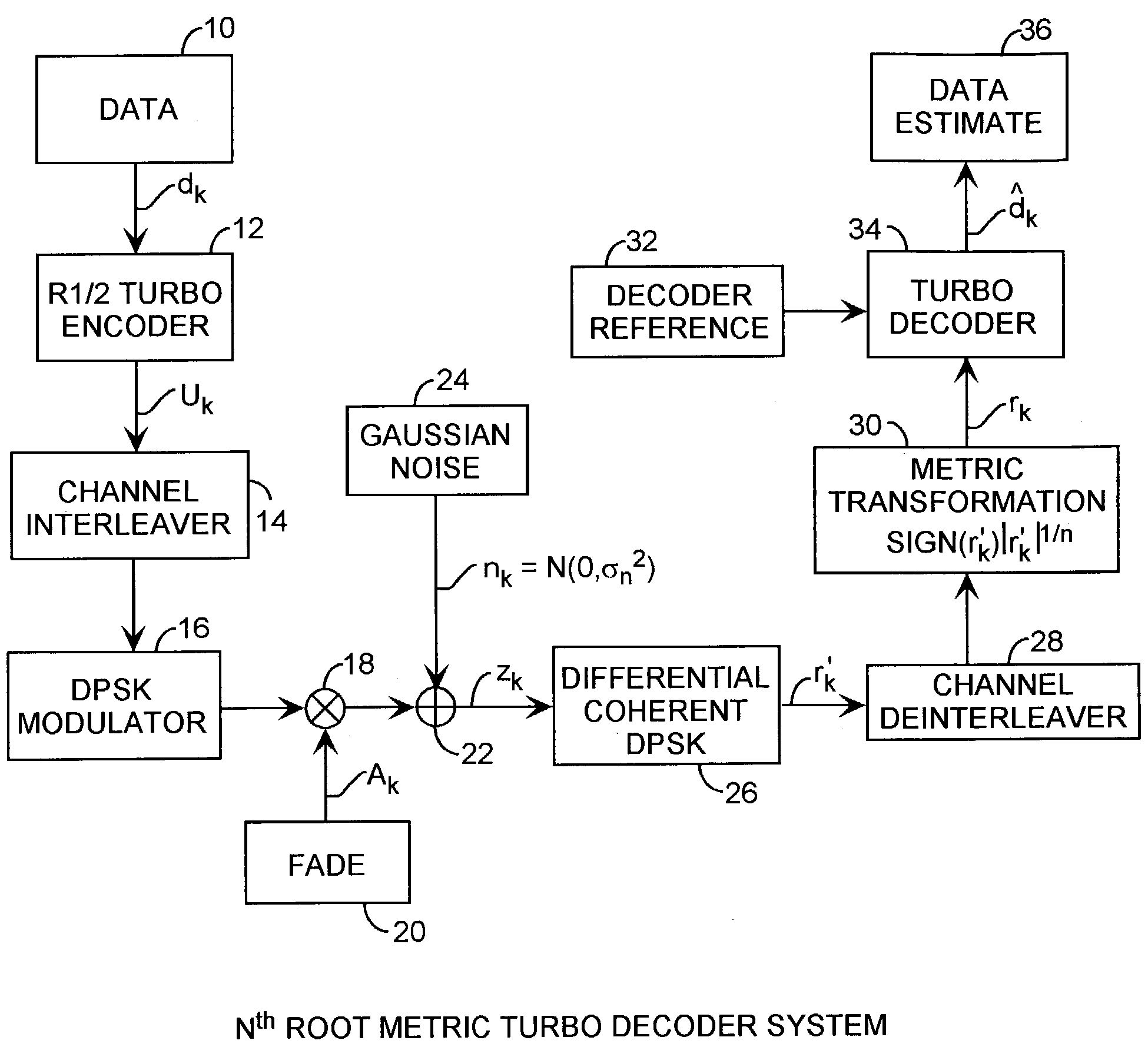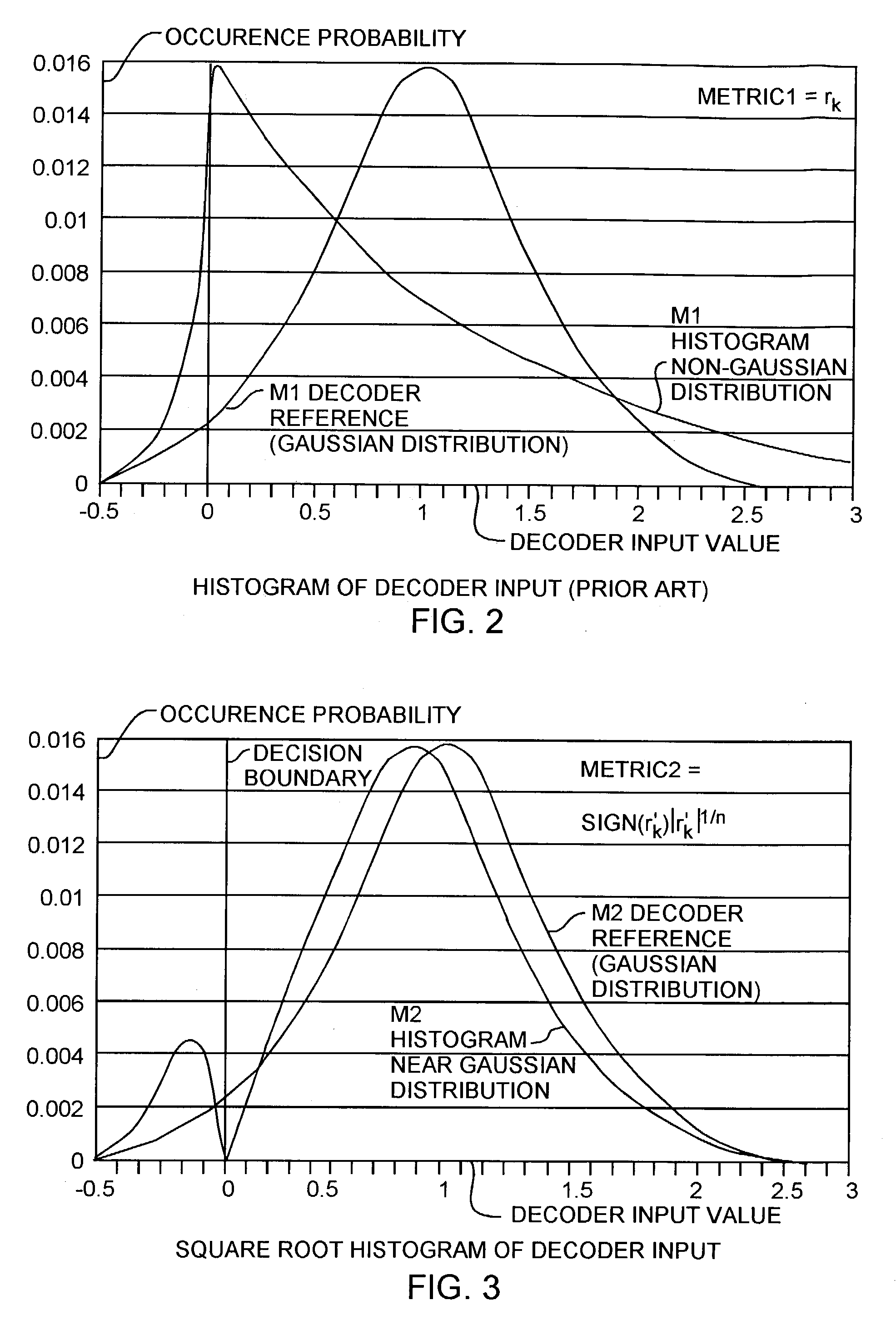Turbo decoding system using NTH root metrics for non-Gaussian communication channels
a communication channel and nth root technology, applied in the field of gaussian communication channel decoding communication system, can solve the problems of conventional turbo-decoding algorithm suffering degraded performance with a reduced ber, degraded turbo-decoding performance, etc., to improve turbo-decoding performance, improve bit error rate performance, and improve the effect of performan
- Summary
- Abstract
- Description
- Claims
- Application Information
AI Technical Summary
Benefits of technology
Problems solved by technology
Method used
Image
Examples
Embodiment Construction
[0018]An embodiment of the invention is described with reference to the figures using reference designations as shown in the figures. Referring to FIG. 1, a cascaded channel structure is used as a model for a turbo decoder communication system. The system is an nth root metric turbo decoder system that communicates an incoming dk data stream 10. The data stream is fed into an rate one-half R(½) turbo encoder 12 providing an encoded stream Uk to an interleaver 14 and modulator 16 providing a transmission signal. Encoding the information symbols, dk, can be accomplished using the rate one-half R(½) turbo encoder 12, that may for example, have two recursive systematic encoders in a parallel concatenated configuration with an S-random interleaver, not shown, that is used to separate the input bits of the two component encoders 12.
[0019]The transmission signal is fed through a communication channel that may be a non-Gaussian channel. The Gaussian channel noise can be modeled by nk sample...
PUM
 Login to View More
Login to View More Abstract
Description
Claims
Application Information
 Login to View More
Login to View More - R&D
- Intellectual Property
- Life Sciences
- Materials
- Tech Scout
- Unparalleled Data Quality
- Higher Quality Content
- 60% Fewer Hallucinations
Browse by: Latest US Patents, China's latest patents, Technical Efficacy Thesaurus, Application Domain, Technology Topic, Popular Technical Reports.
© 2025 PatSnap. All rights reserved.Legal|Privacy policy|Modern Slavery Act Transparency Statement|Sitemap|About US| Contact US: help@patsnap.com



